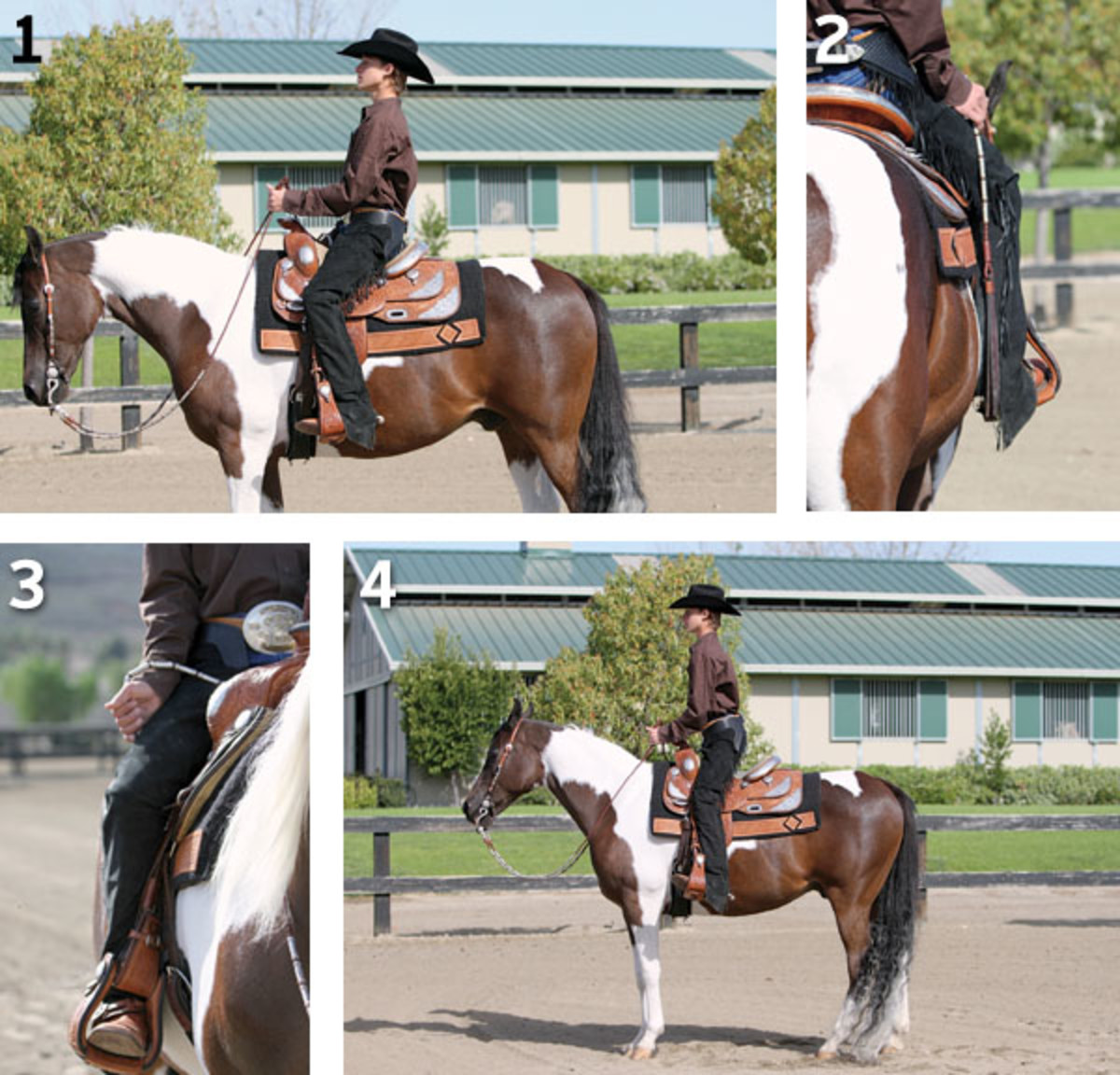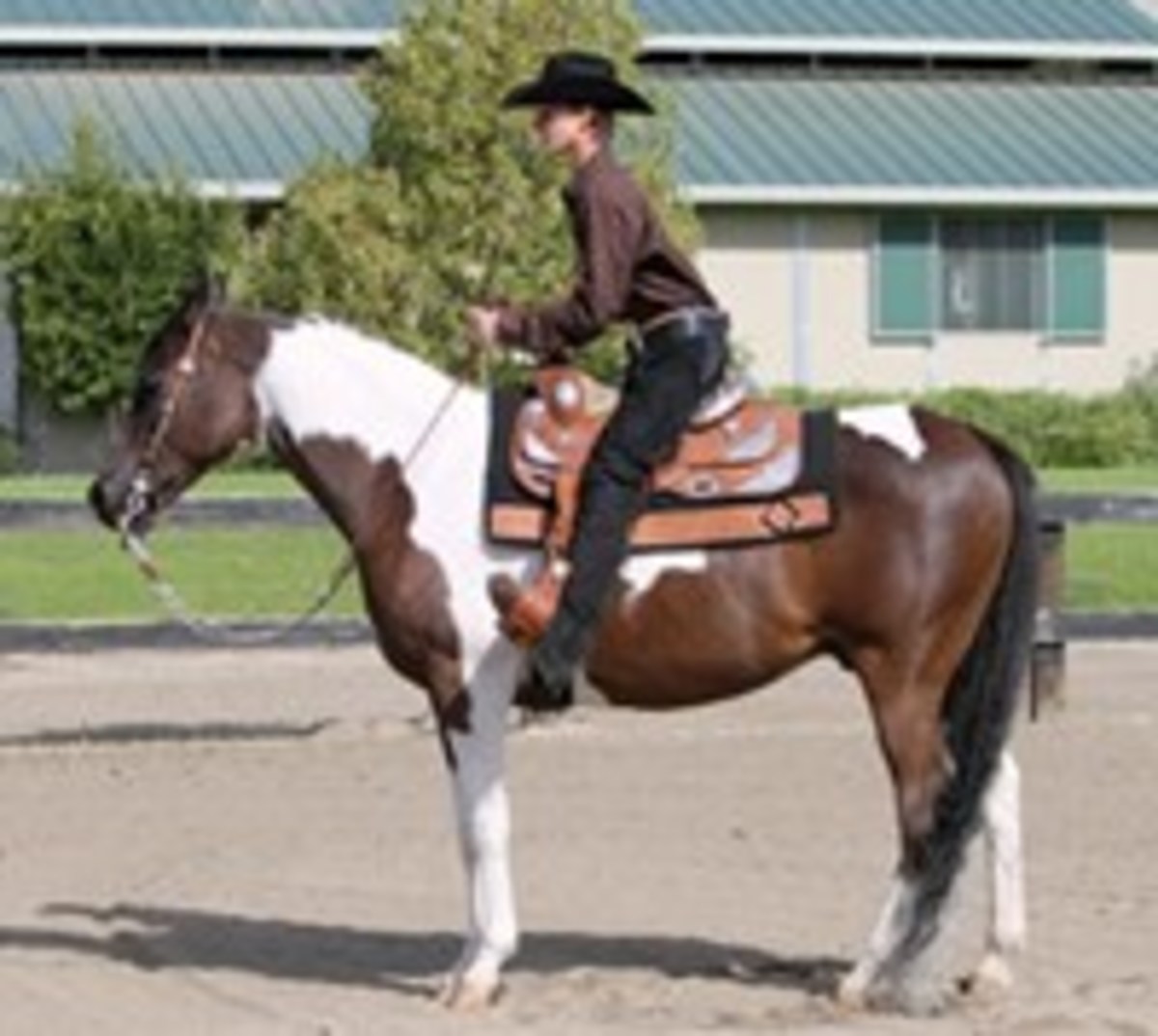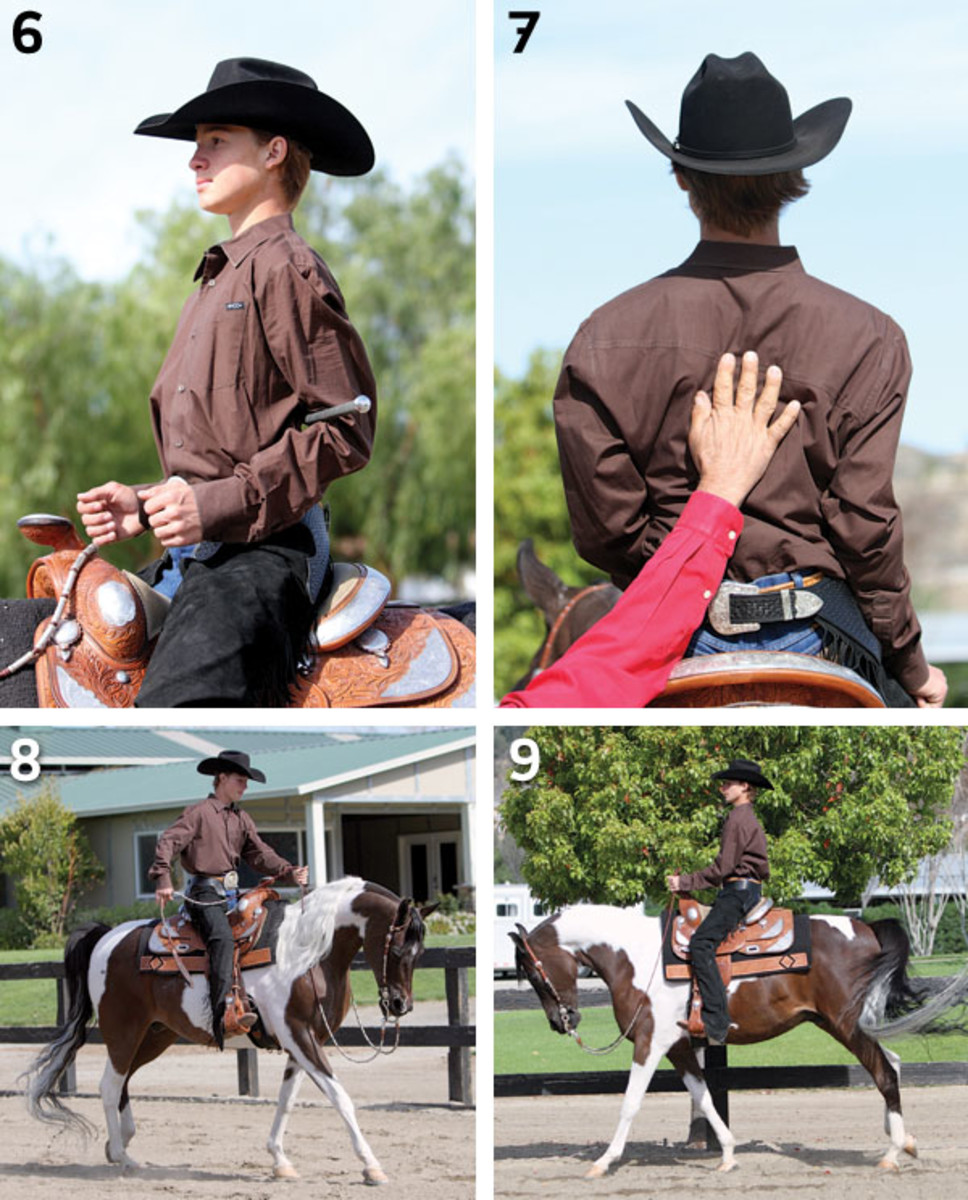No matter what breed of horse you ride, level at which you compete, or even if you don’t compete at all, a solid base (lower body) and core (upper body) are required for good Western equitation/horsemanship. With a workmanlike seat and body position, you can use your body effectively when riding and be the best pilot for your horse.
I’ll cover position pointers to improve your core and base in the saddle, and then compare a less desirable presentation with one that’s correct.
1. Your base—seat and legs—plays the most important role in your riding position. It anchors you in the saddle and gives you contact with your horse’s body. For a workmanlike base, there should be a straight line from your shoulder to your hip to your heel. Your torso (or core) should be straight up and down, with your shoulders square and your abdominal muscles engaged.

2. Your legs should always be on the horse, making light contact. You can’t see any light between the rider’s leg and his horse’s side. Do note that his leg isn’t squeezing the horse; it just has light contact with the horse. The rider pushes his heel down to extend that shoulder-hip-heel line. This heel placement also means he can “get to his horse” quickly for cueing and correction, because his heel or spur is in the right spot and his leg is on his horse.
3. Here’s a look at leg position from the front. You can’t see any daylight between the rider’s leg and his horse here, either. Note that his toe is up and slightly turned out. Pulling your toes up and pushing your heel down, as suggested in Photo 2, puts your foot in the correct place to use your heel or spur.
4. To establish this base alignment, stand straight up in your stirrups, so that your shoulder, hip, and heel are in line. Then slowly sit down into the seat of your saddle, keeping your legs in the same spot they were when you were standing. This will ensure that your base is solidly placed below your core. For a strengthening exercise, you can walk, jog, and lope while standing in your stirrups; then slowly sit in your seat, raising and lowering as you move along.
5. If your legs are too far out in front of you, it’ll be impossible to stand up straight in your stirrups. Your body will lean forward to compensate for the lack of balance, as the rider’s body does here. A similar situation will happen if your legs are too far behind you. That’s why this is an easy way to diagnose if your base is out of alignment.

6. Once your base is established, start work on your core. To begin, use a riding crop placed behind your back, held by your elbows. Keep your elbows close to your sides. This will help you think about bringing your shoulder blades back and together, although in an exaggerated manner. It’ll also make you sit tall—I like to call it lifting your ribcage out of your belt. This gives you a position of strength in your core, along with keeping your shoulders in line with your base as well.

7. With the crop removed, maintain the position you established, with your shoulder blades pulled together, elbows in, torso extended, and back flat, as shown with my hand’s placement here.
8. Here’s an exaggerated example of what goes wrong when your base and core aren’t strong and engaged. The rider’s right hand is far away from his body, which brings his elbow out and arm behind him. That influences his shoulder blades—he can’t keep them together when one arm has gone rogue. Furthermore, his weakness in his core forces him to push his legs out in front of him. This shows the domino effect that a single position flaw can lead to, as well as how that influences the presentation of his horse.
9. Compare Photo 8 to this one, where the rider’s base and core are aligned and strong. His heels are down, there’s a line from his heel to his hip to his shoulder, his legs are on his horse, his ribcage is lifted out of his belt, his elbows are in, and his shoulder blades are pulled back. All of this leads to a workmanlike position and a horse that looks good on the rail.
Bill Melendez, Temecula, California, was born in New York and moved to California as a teen. He started training horses in his 20s. He’s since judged shows around the world; been named chairman of the Judge’s Training and Steward Program for the Arabian Horse Association; and trained, shown, and coached numerous champion horses and riders, including his son, Ryan, shown in these photos.




